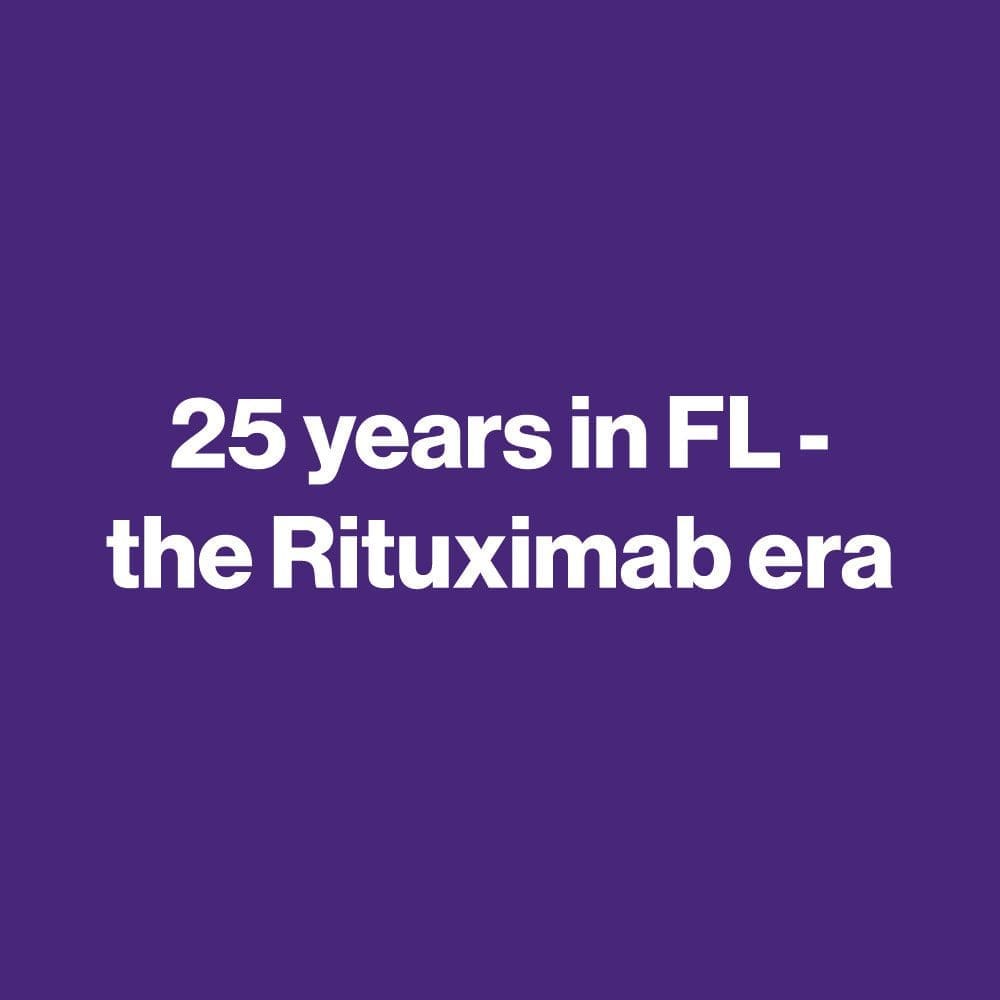
By Dr Mitchell Smith, Chief Medical Officer
A recent re-publication marking 25 years since the seminal 1998 Journal of Clinical Oncology paper (1) upon which Rituximab was approved for relapsed/refractory follicular or low-grade lymphoma (1997 by U.S. FDA, and 1998 by European EMA) leads me to reflect on the incredible progress in this field that has occurred during my career in oncology. It was a landmark approval as the first antibody approved to treat cancer. It is coincidentally now almost a century since the first credited description of follicular lymphoma in 1925, making it a good time to look back, as well as forward.
What was required to get to the approval of Rituximab?
Rituximab is a genetically engineered monoclonal chimeric antibody that targets the CD20 antigen expressed on B cells. This simple description compresses a remarkable amount of knowledge. Several decades of basic scientific research were necessary to understand the biology of B and T lymphocytes of the immune system, how B cells develop and secrete antibodies, that B cells are the cell of origin of FL, and to identify markers for B cells, specifically CD20. Parallel research, based on the Nobel-prize winning (1984) hybridoma research of Kohler and Milstein (2) developed in the early 1970’s, was necessary to be able to create monoclonal antibodies to give to patients. Of note are the disparate areas of basic research that were brought together by visionary clinical researchers to create Rituximab, as well as the time frame of 20-30 years from basic biology to approved drug.
What has happened since Rituximab?
I wrote a paper 5 years post-approval (3) reviewing what was known about Rituximab mechanisms of action and resistance. Unfortunately, now re-reading that report 20 years later I find we have not made as much progress in understanding these areas as we might have hoped. Nonetheless, several other anti-CD20 antibodies have been approved, an era of very effective radio-labeled anti-CD20 antibodies that deliver radiation directly to the lymphoma came and has largely been discarded (for complex reasons), while antibodies targeting other markers and antibody-drug conjugates that deliver drugs directly to B cells have been approved. All these remain active areas of investigation as well. Giving Rituximab for prolonged periods (maintenance) and in combination with chemotherapy have also improved outcomes. None of these, however, have radically changed natural history of FL as much as the effect of giving simply 4 weekly doses of Rituximab alone. This was so dramatic that we refer to 1998 onward as the “Rituximab era”.
The new age of cellular therapy
Recent excitement now focuses not on antibody therapy, but on cellular therapy, harnessing the T cell arm of the immune system to fight FL. Again, this builds on several decades of basic science required to understand how T cells identify, target, and kill abnormal cells while not destroying your own normal cells, as well as how to grow T cells in culture. Parallel research on engineering genetic constructs and inserting them into T cells was required. All this basic knowledge, again moved into the clinic by dedicated clinical investigators, led to the first effective CAR-T cells targeted to B cells being infused in 2010-2011. Now, a little over a decade later, in the US for example, we have several anti-CD19 CART cell products approved, to administer to patients, with many other cellular therapies in development.
Somewhat bridging the fields of antibody and cellular therapy are the bi-specific antibodies (BsAB). Rather than coat a cell with Rituximab and require the body to kill that cell, BsABs have two binding sites: one for the B cell and one for the T cell, so a BsAB serves to bring these together making the T cell more active in eradicating the lymphoma.
A cure within reach for FL
Note the length of time it takes for basic science to translate into new and improved treatment remains measured in years if not decades, though this is getting shorter. It is mind-boggling to consider the advances in biology, technology and treatment that have occurred during my professional life, these were science fiction now turned to science fact:
What an exciting time to have been, and continue to be, taking care of patients with blood cancers.
I joined the FLF because I think it is time to use all these advances to change the paradigm: to take an incurable disease and use these new tools to cure FL. A century since its initial description, a 50-year period of chemotherapy drugs starting post-World War II, then a quarter century of the “Rituximab era” and now, the still early period of cellular immune therapy – the pace is accelerating, and I firmly believe cure is within our reach.
References:
1. McLaughlin P, Grillo-López AJ, Link BK, et al. Rituximab chimeric anti-CD20 monoclonal antibody therapy for relapsed indolent lymphoma: half of patients respond to a four-dose treatment program. J Clin Oncol. 1998 Aug;16(8):2825-33. doi: 10.1200/JCO.1998.16.8.2825. Corrected and republished in: J Clin Oncol. 2023 Jan 10;41(2):154-162. PMID: 9704735.
2. Press release. NobelPrize.org. Nobel Prize Outreach AB 2023. Wed. 25 Jan 2023. https://www.nobelprize.org/prizes/medicine/1984/press-release/
3. Smith, M. Rituximab (monoclonal anti-CD20 antibody): mechanisms of action and resistance. Oncogene 22, 7359–7368 (2003). https://doi.org/10.1038/sj.onc.1206939